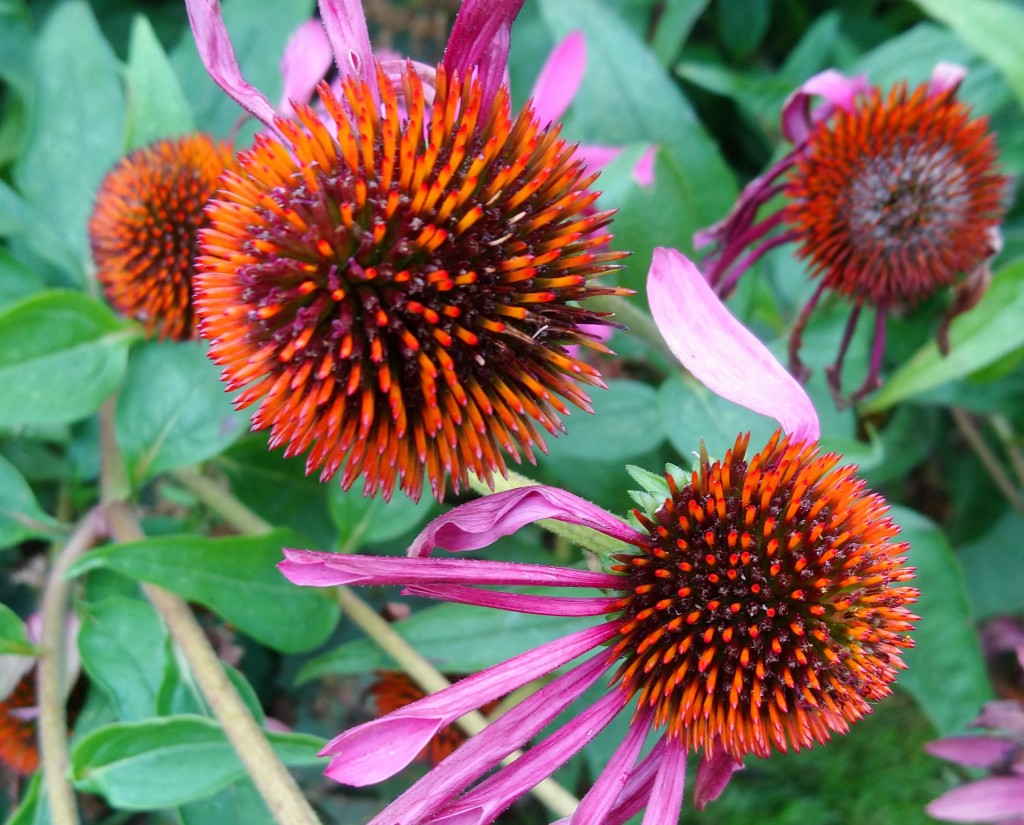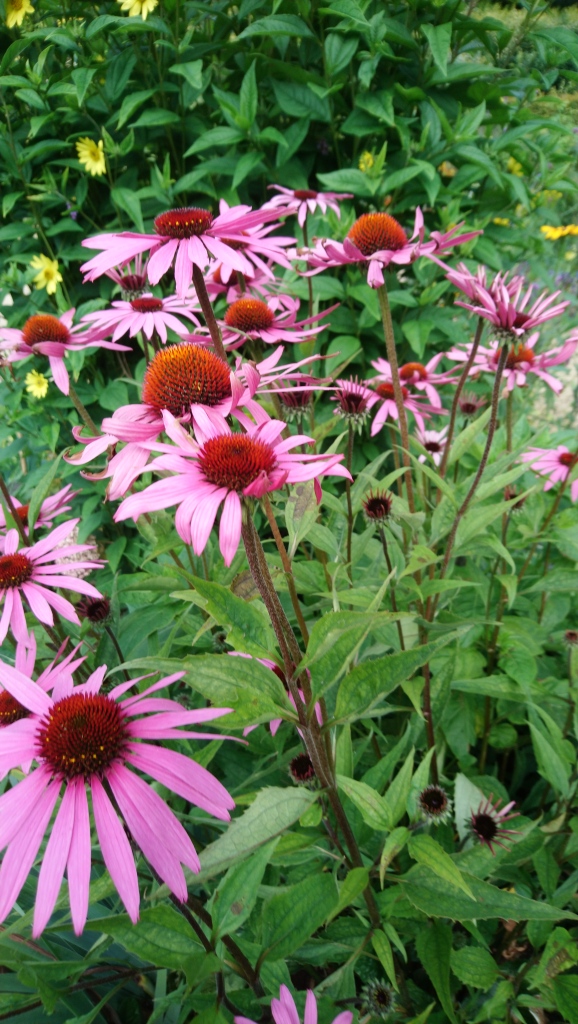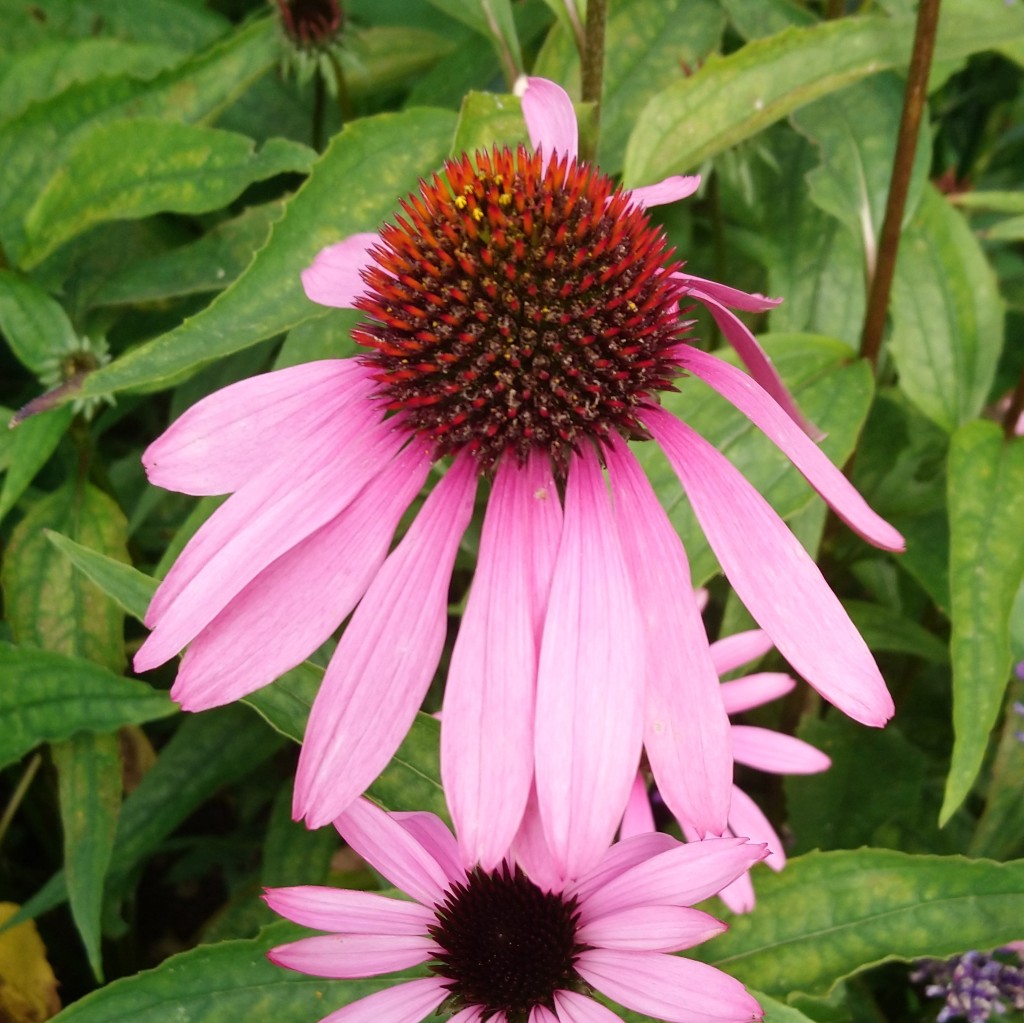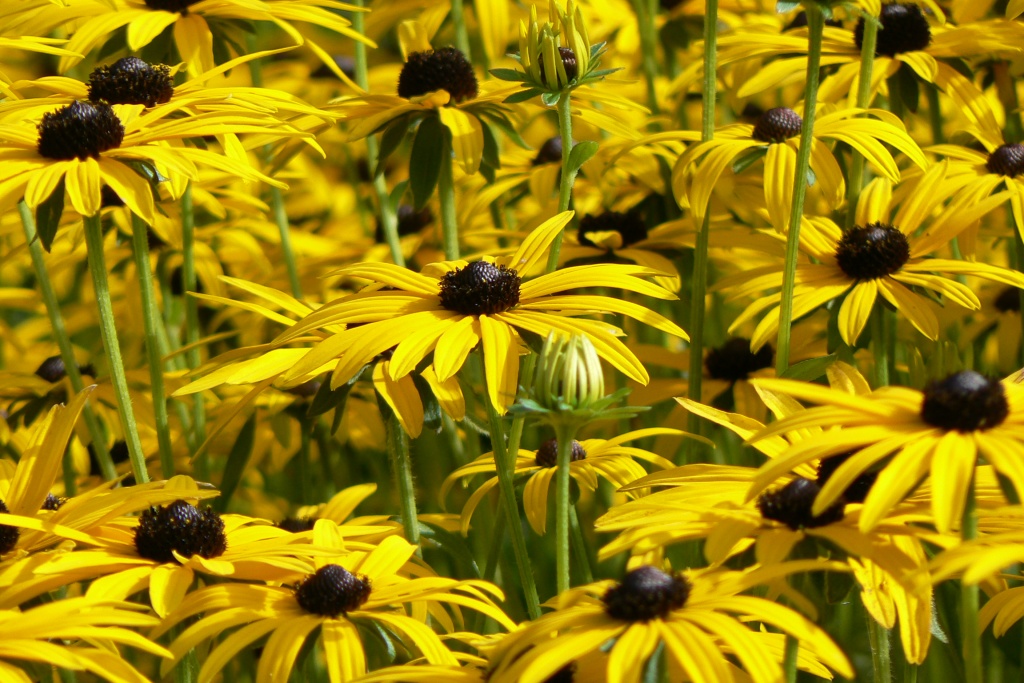
[118] Echinacea purpurea, Purple Coneflower
Introduction
Echinacea purpurea, the Purple Coneflower, is a colourful garden plant in the Aster family, imported from North America. Its other names include Eastern Purple Coneflower or Hedgehog Coneflower, and as a cultivated plant it may be called Echinacea.
Almost all of the species of Echinacea are called Purple Coneflowers! There are three other genera consisting of species called coneflowers – Rudbeckia, Dracopis and Ratibida.
There are many other cultivated plants in the Aster family including the closely related Rudbeckia.
Taxonomy
Kingdom – Plants
Division – Vascular Plants
Class – Angiosperms (Flowering Plants)
Order – Asterales
Family- Asteraceae
Subfamily – Asteroideae
Supertribe – Helianthodae
Tribe – Heliantheae (Sunflower tribe)
Subtribe – Rudbeckiinae
Genus – Echinacea
Scientific Name – Echinacea purpurea
Its synonyms include Rudbeckia purpurea, its original Scientific Name.
Several cultivars are available.
Name
Echinacea comes from the Latinized version of the Ancient Greek ekhinos, meaning hedgehog or sea urchin. As we know from two days ago, purpurea means purple.
Olaus Rudbeck (1630-1702) sometimes known as Olof Rudbeck the Elder, was a Swedish scientist and writer. His son, Olof Rudbeck the Younger (1660-1740) was an equally famous scientist, explorer, botanist and ornithologist. Linnaeus named Rudbeckia in honour of them both.
Description
As you know by now, Asteraceae is a very large family. Two thirds of its species come within the subfamily Asteroideae and even the tribe Heliantheae has 2 500 members. The 35 subtribes of Heliantheae include Rudbeckiinae, which contains just Echinacea and Rudbeckia.
Echinacea purpurea is a bushy perennial plant which produces large inflorescences typical of Asteraceae.


The inflorescence consists an almost spherical array of dark orange disc florets with long, light purple ray florets outside.


The name ‘coneflower’ is derived from the appearance when the ray florets open backwards to make a cone shape, leaving the prominent globular structure in the centre.

Habitat and use
Echinacea purpurea is native to much of North America. It is widely cultivated in parks and gardens as an ornamental plant, as are many other related species.
It is one of three species of Echinacea used in the production of echinacea herbal tea.
See also
Rudbeckia species, such as Rudbeckia hirta, are similar types of coneflower, with a prominent dark centre that gives rise to their other name Black-eyed Susan.

